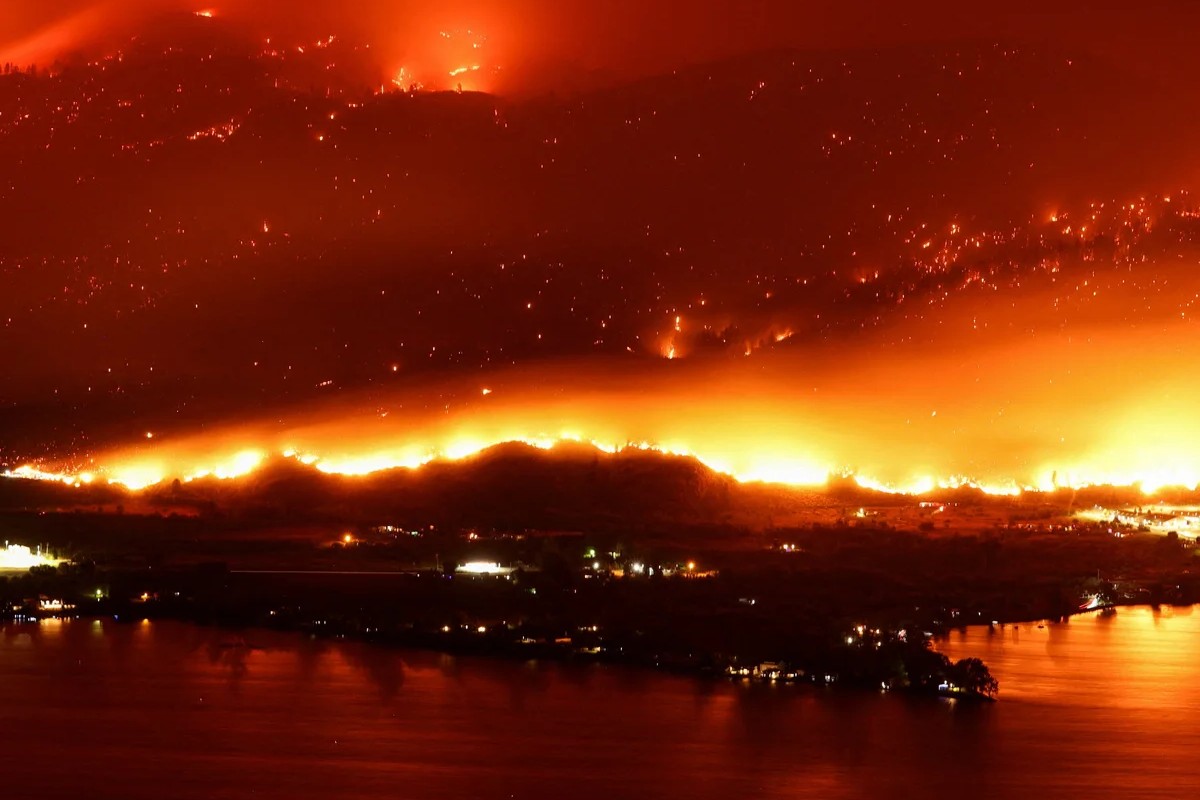
The Lytton Fire was a devastating wildfire that swept through the village of Lytton, British Columbia, in June 2021. This catastrophic event left a lasting impact on the community and environment. Did you know that the fire was so intense it destroyed 90% of the village within minutes? The blaze was fueled by record-breaking temperatures, with Lytton reaching a staggering 49.6°C (121.3°F), the highest temperature ever recorded in Canada. Understanding the causes and effects of such wildfires is crucial for future prevention and preparedness. Here are 30 facts about the Lytton Fire that highlight its severity, causes, and aftermath.
The Lytton Fire: A Tragic Event
The Lytton Fire was a devastating wildfire that ravaged the small village of Lytton, British Columbia. This catastrophic event left a lasting impact on the community and the environment. Here are some crucial facts about the Lytton Fire.
-
The Lytton Fire started on June 30, 2021, and quickly spread due to extreme weather conditions.
-
Lytton, a village in British Columbia, Canada, was almost entirely destroyed by the fire.
-
The fire was fueled by record-breaking temperatures, with Lytton reaching 49.6°C (121.3°F) on June 29, 2021, the highest temperature ever recorded in Canada.
-
The fire spread so rapidly that residents had only minutes to evacuate their homes.
-
Approximately 90% of the village was destroyed, including homes, businesses, and infrastructure.
The Impact on the Community
The Lytton Fire had a profound effect on the residents and the community. The following facts highlight the human toll and the community's resilience.
-
Two residents lost their lives in the fire, and several others were injured.
-
Over 1,000 people were displaced, many of whom lost everything they owned.
-
The local Indigenous community, the Lytton First Nation, was heavily impacted, with many members losing their homes and cultural sites.
-
Emergency services and volunteers worked tirelessly to provide aid and support to those affected.
-
The community has shown incredible resilience, with efforts to rebuild and recover ongoing.
Environmental Consequences
Wildfires like the Lytton Fire have significant environmental consequences. Here are some facts about the environmental impact of the Lytton Fire.
-
The fire burned over 83,000 hectares (205,000 acres) of land.
-
Wildlife habitats were destroyed, displacing numerous animal species.
-
The fire contributed to poor air quality, with smoke spreading across British Columbia and beyond.
-
The intense heat and flames damaged the soil, making it difficult for vegetation to regrow.
-
The fire's aftermath has raised concerns about the long-term health of the local ecosystem.
Causes and Contributing Factors
Understanding the causes and contributing factors of the Lytton Fire is crucial for preventing future disasters. Here are some key points.
-
The fire was likely sparked by human activity, although the exact cause remains under investigation.
-
Extreme heat and drought conditions created a perfect environment for the fire to spread.
-
Climate change has been identified as a significant factor, with rising temperatures and changing weather patterns increasing the risk of wildfires.
-
The region's dense vegetation and dry conditions provided ample fuel for the fire.
-
Strong winds helped the fire spread rapidly, making it difficult to control.
Response and Recovery Efforts
The response to the Lytton Fire involved multiple agencies and organizations working together. Here are some facts about the efforts to combat the fire and support recovery.
-
Over 100 firefighters were deployed to battle the blaze.
-
Helicopters and air tankers were used to drop water and fire retardant on the flames.
-
Evacuation centers were set up to provide shelter and support for displaced residents.
-
The Canadian Red Cross played a significant role in providing aid and resources to those affected.
-
Government agencies at the local, provincial, and federal levels have committed to supporting the rebuilding and recovery process.
Lessons Learned and Future Preparedness
The Lytton Fire has highlighted the need for better preparedness and response strategies. Here are some lessons learned and steps being taken to prevent future disasters.
-
Improved early warning systems and communication channels are essential for timely evacuations.
-
Investing in fire-resistant building materials and construction practices can help reduce damage.
-
Community education and awareness programs are crucial for ensuring residents know how to respond in an emergency.
-
Enhanced forest management practices, such as controlled burns and vegetation thinning, can help reduce the risk of wildfires.
-
Addressing climate change and reducing greenhouse gas emissions are critical for mitigating the long-term risk of extreme weather events.
The Impact of the Lytton Fire
The Lytton Fire left a lasting mark on both the environment and the community. This devastating event highlighted the urgent need for better fire prevention and response strategies. The fire's rapid spread and intensity were a stark reminder of the dangers of climate change and the importance of preparedness.
Communities must learn from Lytton's experience to improve safety measures and emergency protocols. Investing in fire-resistant infrastructure and early warning systems can make a significant difference in future incidents. Additionally, supporting reforestation efforts and habitat restoration will help heal the land and promote biodiversity.
The Lytton Fire serves as a powerful example of nature's force and the resilience of those affected. By taking proactive steps, we can better protect our communities and environment from similar disasters in the future.
Was this page helpful?
Our commitment to delivering trustworthy and engaging content is at the heart of what we do. Each fact on our site is contributed by real users like you, bringing a wealth of diverse insights and information. To ensure the highest standards of accuracy and reliability, our dedicated editors meticulously review each submission. This process guarantees that the facts we share are not only fascinating but also credible. Trust in our commitment to quality and authenticity as you explore and learn with us.
